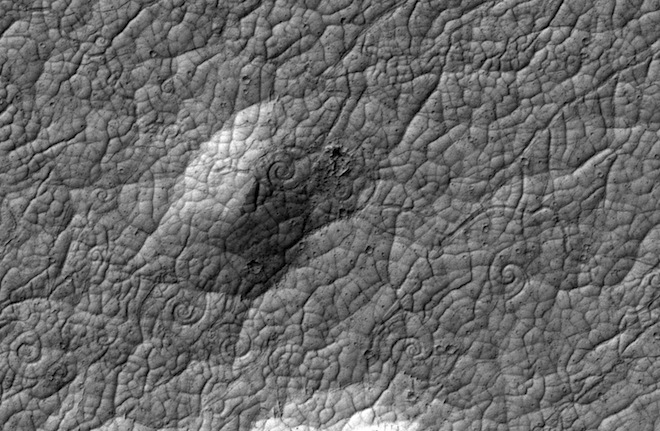We're open daily! View holiday hours
Science News
Astronomy News Round-up
April 27, 2012

To celebrate Hubble’s 22nd birthday earlier this week, we thought we’d highlight some recent astronomical news.
April 24, 1990, “the Space Shuttle Discovery roared into space, carrying on board a revolution: The Hubble Space Telescope,” exclaims the Bad Astronomer in Discover. Universe Today celebrated by posting a video and a new panorama of 30 Doradus, “a raucous stellar breeding ground.” But my personal favorite tributes to Hubble? “Hubble Gotchu” with Late Night with Jimmy Fallon’s Milky J.
What the heck is up with Saturn’s most outer F-ring? Cassini images this week show “snowballs” piercing through the ring, but ultimately, the Saturnian moon Prometheus causes the disruption (and no, that’s not a plug for the new Ridley Scott film). New Scientist has video, National Geographic offers some amazing images.
Speaking of Saturn’s moons, NASA reports that Phoebe may be more like a Kuiper Belt object or dwarf planet than a typical moon. According to Julie Castillo-Rogez, a planetary scientist at NASA’s Jet Propulsion Laboratory:
Objects like Phoebe are thought to have condensed very quickly. Hence, they represent building blocks of planets. They give scientists clues about what conditions were like around the time of the birth of planets and their moons.
My favorite image of the week? Lava coils on Mars, captured by NASA’s HiRISE spacecraft, pictured above. Adam Mann offers more information on these beautiful spirals in Wired.
Did you see the minivan-sized meteorite falling to the Sierra Nevada mountains last weekend? Universe Today has reports of the incident and the fragment collecting. For those who live nearby, the SETI Institute offers tips on what to do if you come across a piece of the meteorite.
Also this week, Planetary Resources, Inc., announced the intent to mine nearby asteroids for precious metals. Sounds more like science fiction than fact, right? Read more details in Wired and why the Bad Astronomer thinks it’s possible in Discover.
Finally, where’s the dark matter? Last week, European Southern Observatory (ESO) researchers announced that after mapping the motion hundreds of stars in the Milky Way, they have found no evidence for dark matter in a volume of space around the Sun. According to current models, dark matter makes up 80% of the universe, explaining why the outer parts of galaxies rotate so quickly and how galaxies formed and evolved. While unseen, dark matter shows itself by its gravitational attraction for the material around it. (Take a peek at our own Ryan Wyatt’s blog post in Visualizing Science about ESO’s visualization of dark matter.)
According to Nature News,
The researchers found that at most, only about one-tenth the amount of dark matter predicted by models could exist in the volume of space they examined.
This new finding, if confirmed, will completely upend cosmic theories. Sounds like fun!
Looking for dark matter close to home? Hubble… Maybe not gotchu.
Image: NASA/JPL/University of Arizona